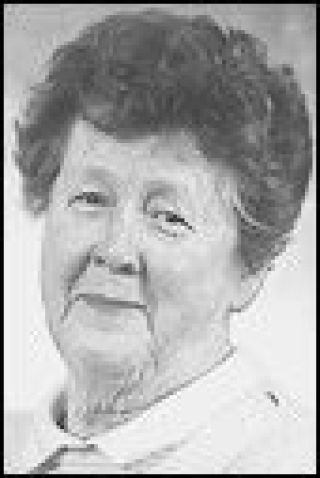Why, asked my eye doctor, havent you written about some of the effects of 9/11 on the medical field, like the corneal transplant program? Because I didnt know about it, I said. Now I do, thanks to Patty Lent, a former Kitsap County Commissioner long active in the transplant program.
About 40 years ago, she tells me, the Bremerton Central Lions Club established the Seattle Eye Bank whereby corneal tissue was taken from the eyes of the deceased, with the familys permission, of course, and brought to Bremerton and used to restore the sight of people who otherwise would go blind. Bremerton was the only place in the state where the operation was being performed.
They used to take the entire eye out, Mrs. Lent said. But now just the corneal tissue is taken. It is processed in a Styrofoam container and someone from the Seattle Eye Bank would take it down to the ferry for Bremerton. A ferry worker would take the container and when the boat got to Bremerton, hand it over to someone waiting from the Lions Club who would then drive it to the hospital where the surgery was to be performed.
After 9/11, ferry management called a halt to the shuttle service, pleading lack of time and unwillingness to bear the responsibility for being the overseer.
Now, we have to take the ferry to Seattle and be met there by someone from the eye bank who hands over the container we ride back and take it to Harrison Medical Center where Dr. Paul Kramer does the surgery, Mrs. Lent said. He does a particular kind of corneal transplant that is the latest medical advancement. New necessary instrumentation is required to prepare the tissue for transplant and Seattle cant do it. Its done for us at the Portland Eye Bank, so Portland puts the container on a plane to Seattle. The Seattle Eye Bank picks it up at the airport and drives it to the ferry terminal.
This is part of a nationwide program called VisionShare, Mrs. Lent said. If we have a person for transplant and no tissue, we can get one from another state. If we have a tissue and no one ready in this state, we send the tissue to another state. Washington interacts with Montana, Idaho and Alaska, each of which has its own eye bank to do the preparation. We figure weve done thousands, 10,000 from our local eye bank alone.
For every transplant, about 18 papers have to be prepared, she said, dealing with the family history of the donor, blood test results, etc. This all goes to a laboratory to make sure no AIDS, herpes or some disease affected the blood that surrounded the tissue or is part of the tissue.
They try to do this within 72 hours. The tissue can stay in a solution for 14 days but the rush is on to get it transplanted as soon as possible. They would like to go back to the old shuttle service they had before 9/1l. But ferry management says no way.
We no longer allow unaccompanied freight, said Susan Harris, customer information manager. Our crews do not have the time or can take the responsibility of accepting the container, getting payment, writing out a receipt and getting it off on the next boat.
The corneal transplant program is a great thing to do, she said. We used to do all kinds of stuff that was walked on, like blood, but its just not possible any more.
Too bad but understandable. By the way, all that hustling around is paid for by the individual Lions Club members who do it. They donate their time and pay their own ferry fare and gasoline bills as a community service. No reimbursement. That, says Mrs. Lent, is what service clubs are for.
Adele Ferguson can be reached at P.O. Box 69, Hansville, WA 98340.
9/11 repercussions
Why, asked my eye doctor, havent you written about some of the effects of 9/11 on the medical field, like the corneal transplant program? Because I didnt know about it, I said. Now I do, thanks to Patty Lent, a former Kitsap County Commissioner long active in the transplant program.


